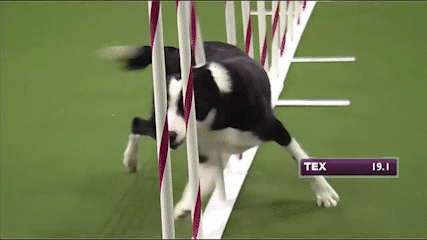
“GOOD BELLA!
HERE IS A TREAT FOR YOU”
AND A PAT ON THE BACK TOO
Go to the animal shelter website, select a dog, fill out some paperwork, and bring it home.—
or, even easier, go to a breeder and choose your favorite, just remember to bring cash.
Whether it is an animal shelter’s printing lists, a digital platform designed for “rehoming,” or a post-it note on the street, there is a multitude of pathways for a dog to enter a new human home —many of which now follow the easy-to-buy model of apps and direct-to-consumer online retail platforms.8
While such designations as “being an adopted dog” or “being a dog bought from the breeder next door” may imply not only a potential influence on the dog’s behavior based on its past experiences but also the human caregivers’ intent to shape the dog's future identity in accordance with societal norms. In essence, the dog, just saved from the kennel —or the breeder's hands, undergoes a process of adjustment to fulfill its designated purpose: An agility dog?9 A petfluencer?10 A hunting dog? Or would it even be capable of fulfilling all those roles?11
Regardless of the dog's intended purpose, its identity is influenced by various factors such as the naming process, mate selection, or determining which commands and tricks are the most suitable to teach it. When those are accomplished, they are often acknowledged through positive reinforcement, often rewarded through verbal treats such as “Good girl!” and “Here's a treat for you!” But those rewards do not exist independently nor in a spontaneous manner. Instead, they are part of command sequences such as “Bella, sit down, paw. Good girl! *Human gives a treat to Bella*”, a setting in which “Bella” is expected to respond to certain commands to please the human and fulfill its requests. And, in the best-case scenario, it gets a snack.
8
James Serpell, on its studies on pet-keeping in Non-Western societies, claims that “in contexts where adequate time and resources are available, pet-keeping arise as an accessible, natural, easy and beneficial product of human social preopensities”.
Serpell, James A. “Pet-Keeping in Non-Western Societies: Some Popular Misconceptions.”
Anthrozoös 1, no. 3 (1987): 166–74

9
Agility dogs are the so-called dogs that compete in agility dog sports. Regardless of their age, size, gender or breed, their main chorus is to be handled through an obstacle course. The roots of this sport go back to 1970 in England, when it was created as a demonstation sport.
OneMind Dogs. “What Is Dog Agility?”
OneMind Dogs. Accessed February 19, 2023
10
By definition, petfluencers are technically humans who post pet-related content on social media platforms, and petfluencers create engaging, educational, and inspirational content that is designed to suit a specific audience.
Green, Adam. “Rise of the Petfluencers: How Instagram-Famous Pets Became Big Business.” Sifted, Accessed September 30, 2022
11
Jack Halberstam, in relation to the place that a companion animal occupies along the side of humans, shares that “its liveliness depends on the ability to pleasure us or to answer to our anthropomorphic call for companionability, in any shape and context we mandate”.
Halberstam, Jack. Wild Things: The Disorder of Desire
(Durham: Duke University Press, 2021)